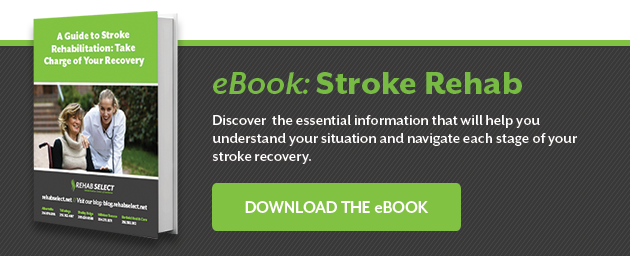
Strokes affect more than 795,000 people in the U.S., and 610,000 of these are first or new strokes. They can cause significant impairment to motor skills, language, cognition, and physical function. According to Johns Hopkins Medicine, “The long-term effects of stroke — which vary from person to person, depending on the stroke’s severity and the area of the brain affected — may include:
- cognitive symptoms like memory problems and trouble speaking;
- physical symptoms such as weakness, paralysis and difficulty swallowing;
- emotional symptoms like depression and impulsivity, and
- heavy fatigue and trouble sleeping.
After a Mini Stroke: What to Expect
A transient ischemic attack (TIA), commonly known as a mini-stroke, occurs when there's a brief disruption of blood flow to the brain, typically due to a blood clot or constricted blood vessels. Unlike full-blown strokes, TIAs are short-lived, lasting only a few minutes, and typically don't result in permanent brain damage or lasting consequences.
After experiencing a transient ischemic attack (TIA), it's crucial to heed your doctor's advice and prioritize your recovery. While TIAs may not demand as much rehabilitation as full-fledged strokes, they still require attention and rehabilitative efforts to prevent future, potentially more severe strokes.
No matter what kind of stroke you suffer, studies show that earlier and more repetitious rehab can greatly benefit stroke patients by optimizing recovery.
Toward this end, stroke rehabilitation generally starts in the hospital as soon as the patient is stable. This means that rehab may begin as early as two days after a stroke has occurred and will be continued in the hospital until the patient is able to be released. If you find yourself asking, “After a stroke, what to expect,” you’ve come to the right place. Here, we’ll discuss the phases of rehabilitation after a stroke.
Recovery from a Stroke: What to Expect from Rehab
Depending on the situation and the severity of the stroke, initial rehabilitation could include:
-
Staying in the hospital unit while participating in inpatient therapy
-
Transitioning to a long-term care facility that provides rehab therapy and skilled nursing care
-
Entering a subacute care unit
-
Choosing a rehabilitation facility that offers individualized inpatient or outpatient therapy
-
Opting for in-home physical therapy
-
Selecting a combination of home therapy and outpatient therapy
With each of these options, the long-term goal of rehabilitation is to help improve the stroke survivor's physical and cognitive functions, relearn the skills they have lost, and ultimately improve their overall quality of life so that they can become as independent as possible.
Types of Stroke Rehab
A major component of stroke rehab centers around practicing learned skills. Research has shown that while the nervous system can often adapt and recover some function on its own, repetitive practice is essential for regaining most of the skills lost due to stroke.
There are many methods involved in stroke rehabilitation, depending on the part(s) of the body affected. Each approach is aimed at restoring the physical and cognitive functions of the patient.
-
Physical Therapy
Physical therapy focuses on strengthening motor skills and involves exercises that are designed to help improve muscle strength and coordination. Often specific therapies are utilized in order to strengthen the parts of the body affected by stroke.
For example, many stroke survivors will go through mobility training to learn to use walking aids (canes, braces, or walkers) and to help increase ankle strength, which will better help support the body. Forced therapy, or constraint-induced therapy, involves restricting the use of an unaffected limb to help stroke survivors practice moving the affected limb. Range-of-motion therapy exercises help lessen muscle tension and help patients regain range of motion. -
Cognitive Therapy
Cognitive therapies are used for communication disorders caused by stroke damage in the brain. This therapy helps patients regain lost abilities in comprehension, speaking, listening, and writing. Evaluations are used to test cognitive skills and emotional adjustment. Counseling with a mental health professional is typically provided. -
Rehab Supported by Technology
Technology is incorporated into many types of stroke rehabilitation. For example, controlled amounts of electricity can be used to stimulate weakened muscles. Electricity causes those muscles to contract, helping with muscle memory. Other therapies use robotic devices to help assist impaired limbs in performing repetitive motions.
While it can take years to fully recover from the impact of a stroke, rehab can help speed up the recovery process, increasing the chances of regaining more of one's functions and, thus, improving the quality of the rest of their life.
Discover Alabama's Stroke Rehabilitation Programs for Comprehensive Recovery
At Rehab Select, we specialize in aiding patients through all stages of stroke rehabilitation. Our dedicated therapy teams provide tailored programs to address cognitive challenges and promote recovery. With an emphasis on evidence-based treatments, our approach aims to enhance cognitive function and support your journey toward optimal rehabilitation.
Explore one of our five Alabama rehab centers to start your recovery journey. Early initiation of rehabilitation after a stroke is crucial for maximizing recovery potential. Schedule a call or book a tour today!





